Design and Analysis of IEEE 33-Bus System Power Distribution Network
VerifiedAdded on 2023/06/05
|10
|662
|169
Project
AI Summary
This project focuses on designing the power distribution network of the IEEE 33-bus system using Digsilent's Powerfactory software. The design includes load flow calculations to determine apparent, real, and reactive power, along with line losses. The base substation voltage is 12.66 kV with a 10 MVA r...
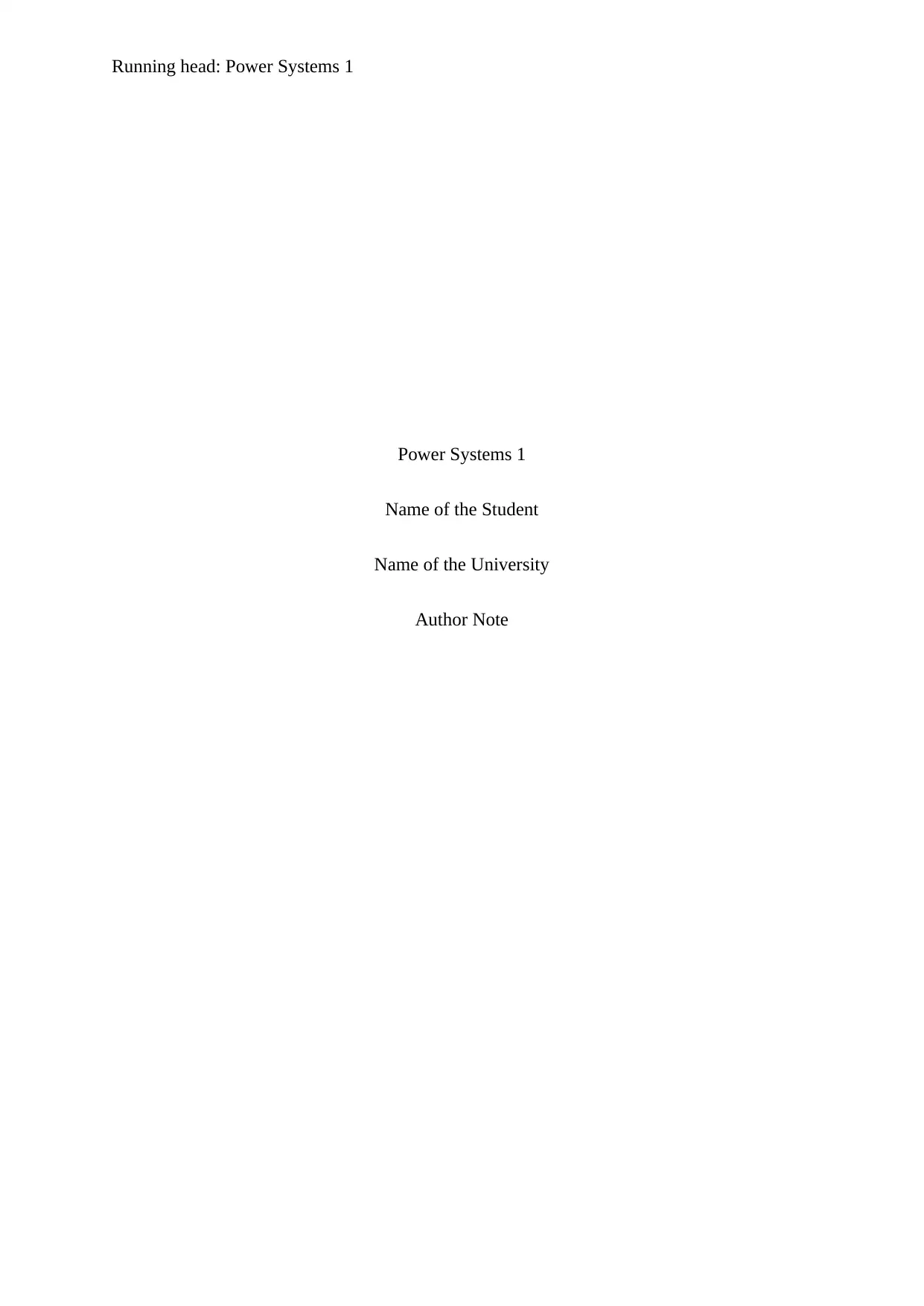
Running head: Power Systems 1
Power Systems 1
Name of the Student
Name of the University
Author Note
Power Systems 1
Name of the Student
Name of the University
Author Note
Paraphrase This Document
Need a fresh take? Get an instant paraphrase of this document with our AI Paraphraser

1Power Systems 1
Executive summary:
The objective of this project is to design the total power distribution network of the
IEEE 33-bus system using the Powerfactory software which is provided by Digsilent.
Additionally, it is required to produce the load flow calculations and then to find the
apparent, real and reactive power and the line losses in individual lines. As given in the
question substation voltage of the base is 12.66 kV and the volt-ampere rating of the base is
about 10 MVA. Also, different numbers of solar PV panels and wind generators are
connected to the different numbers of busses in the system. The bus 1 is considered as the
main substation bus and the voltage is distributed to different busses from the bus 1.
Introduction:
As given in the figure below the different busses are drawn using the Powerfactory
software and their corresponding resistances and the reactance values are entered in those
busses and lines (Das, 2016). The apparent, real and reactive powers are automatically
calculated in Powerfactory by the impedance values provided in the lines. The IEEE 33-bus
grid is depicted in the following figure below (Biswas & GH, 2018).
Executive summary:
The objective of this project is to design the total power distribution network of the
IEEE 33-bus system using the Powerfactory software which is provided by Digsilent.
Additionally, it is required to produce the load flow calculations and then to find the
apparent, real and reactive power and the line losses in individual lines. As given in the
question substation voltage of the base is 12.66 kV and the volt-ampere rating of the base is
about 10 MVA. Also, different numbers of solar PV panels and wind generators are
connected to the different numbers of busses in the system. The bus 1 is considered as the
main substation bus and the voltage is distributed to different busses from the bus 1.
Introduction:
As given in the figure below the different busses are drawn using the Powerfactory
software and their corresponding resistances and the reactance values are entered in those
busses and lines (Das, 2016). The apparent, real and reactive powers are automatically
calculated in Powerfactory by the impedance values provided in the lines. The IEEE 33-bus
grid is depicted in the following figure below (Biswas & GH, 2018).
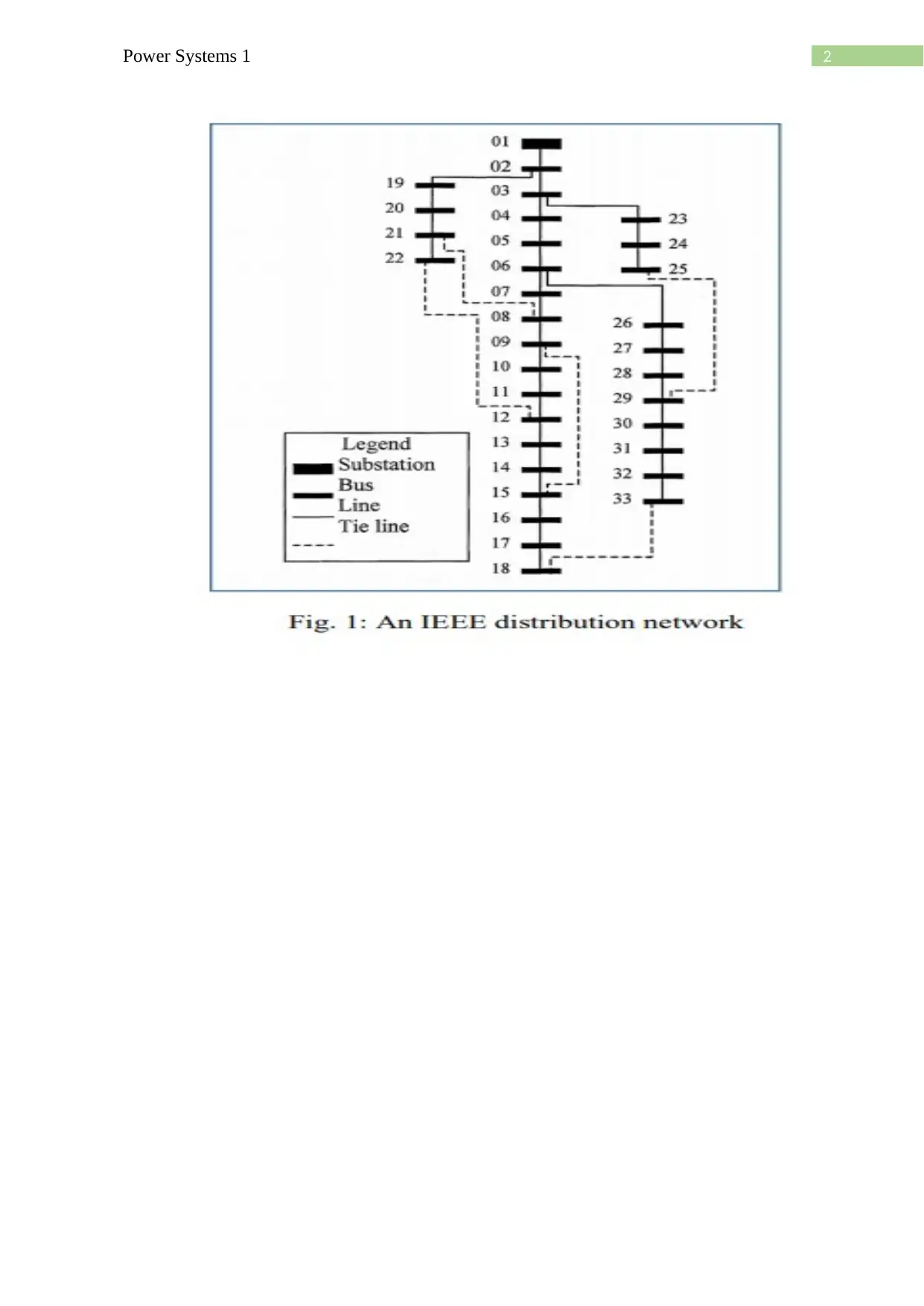
2Power Systems 1
⊘ This is a preview!⊘
Do you want full access?
Subscribe today to unlock all pages.

Trusted by 1+ million students worldwide

3Power Systems 1
Paraphrase This Document
Need a fresh take? Get an instant paraphrase of this document with our AI Paraphraser
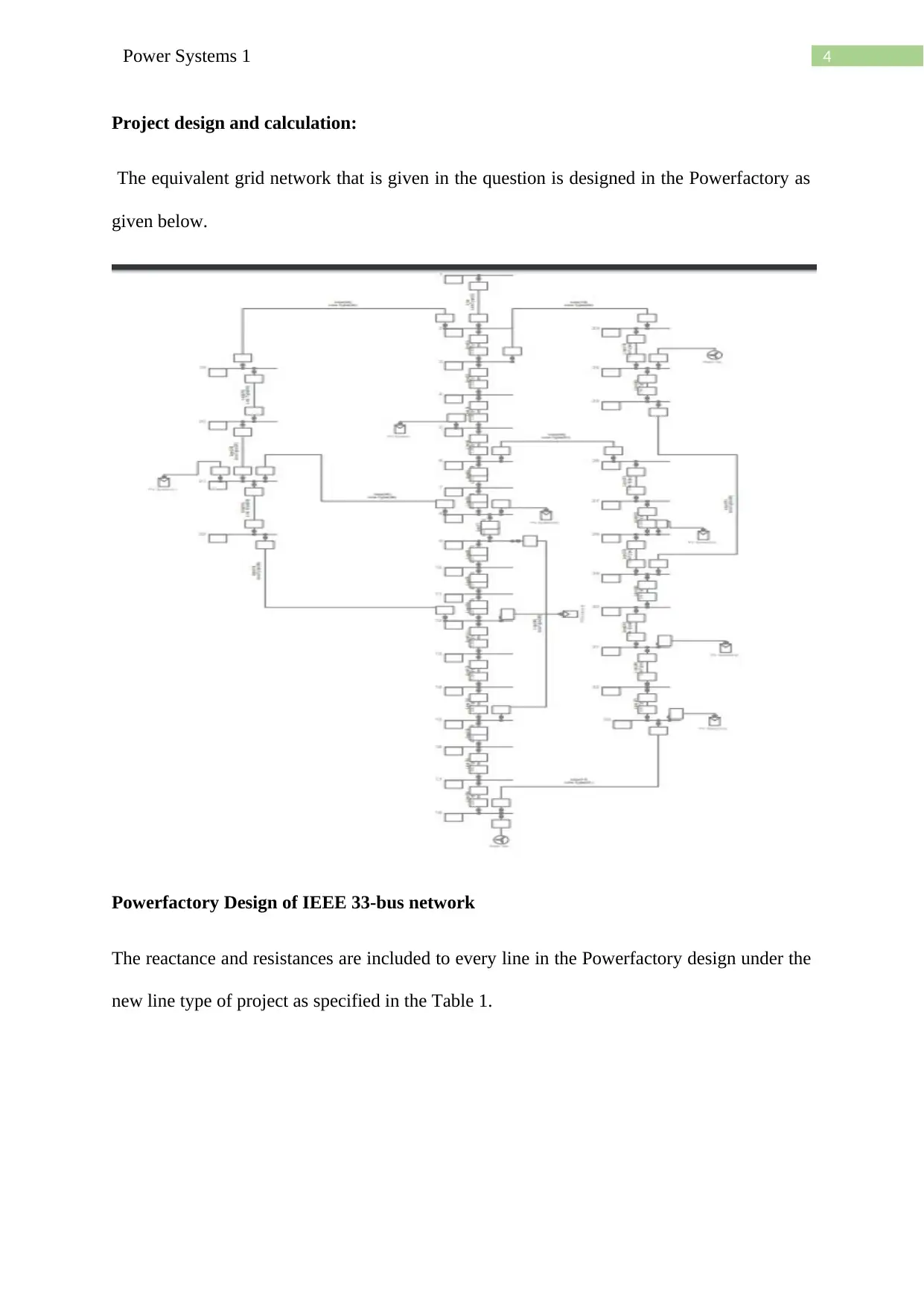
4Power Systems 1
Project design and calculation:
The equivalent grid network that is given in the question is designed in the Powerfactory as
given below.
Powerfactory Design of IEEE 33-bus network
The reactance and resistances are included to every line in the Powerfactory design under the
new line type of project as specified in the Table 1.
Project design and calculation:
The equivalent grid network that is given in the question is designed in the Powerfactory as
given below.
Powerfactory Design of IEEE 33-bus network
The reactance and resistances are included to every line in the Powerfactory design under the
new line type of project as specified in the Table 1.
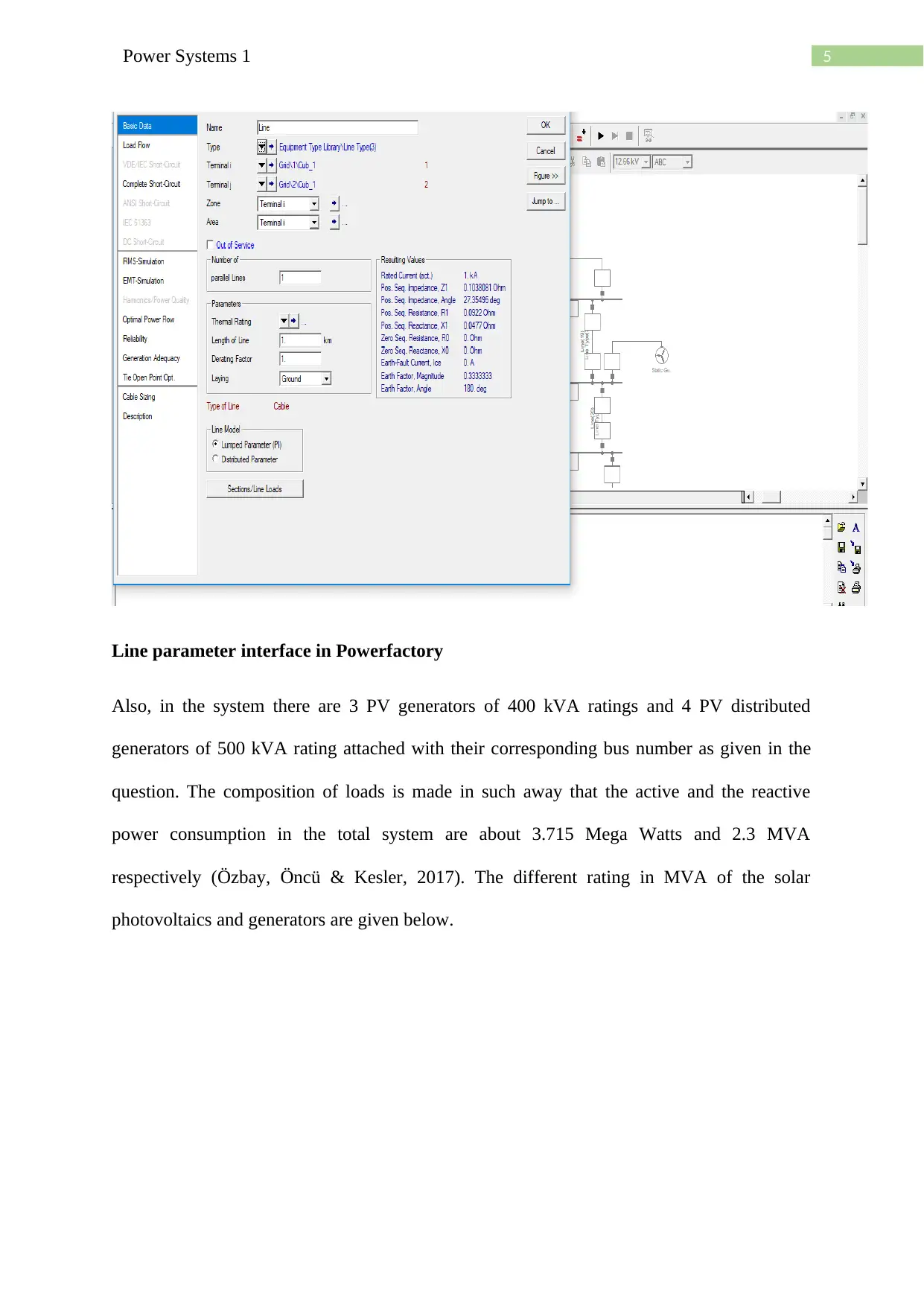
5Power Systems 1
Line parameter interface in Powerfactory
Also, in the system there are 3 PV generators of 400 kVA ratings and 4 PV distributed
generators of 500 kVA rating attached with their corresponding bus number as given in the
question. The composition of loads is made in such away that the active and the reactive
power consumption in the total system are about 3.715 Mega Watts and 2.3 MVA
respectively (Özbay, Öncü & Kesler, 2017). The different rating in MVA of the solar
photovoltaics and generators are given below.
Line parameter interface in Powerfactory
Also, in the system there are 3 PV generators of 400 kVA ratings and 4 PV distributed
generators of 500 kVA rating attached with their corresponding bus number as given in the
question. The composition of loads is made in such away that the active and the reactive
power consumption in the total system are about 3.715 Mega Watts and 2.3 MVA
respectively (Özbay, Öncü & Kesler, 2017). The different rating in MVA of the solar
photovoltaics and generators are given below.
⊘ This is a preview!⊘
Do you want full access?
Subscribe today to unlock all pages.

Trusted by 1+ million students worldwide

6Power Systems 1
Paraphrase This Document
Need a fresh take? Get an instant paraphrase of this document with our AI Paraphraser
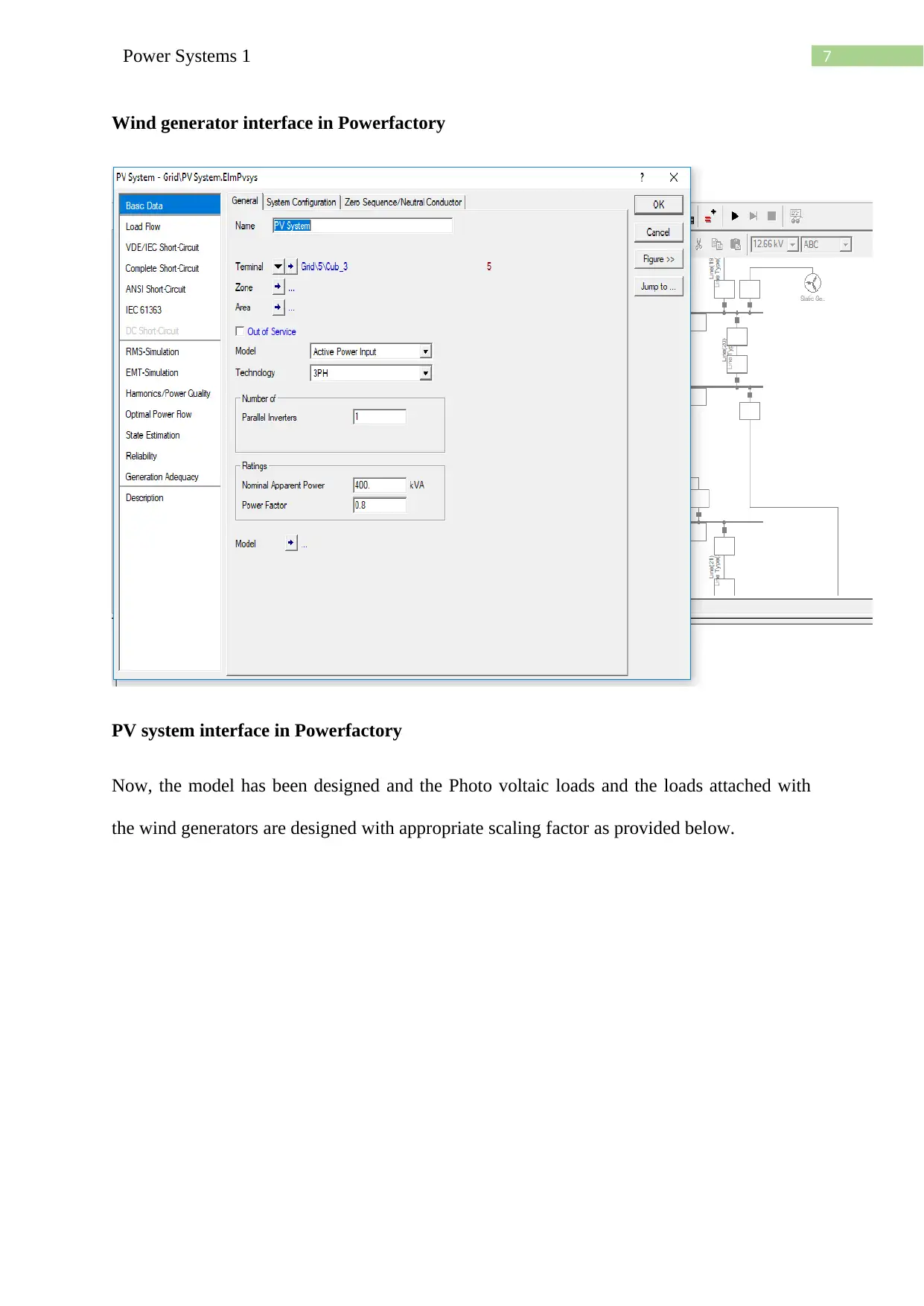
7Power Systems 1
Wind generator interface in Powerfactory
PV system interface in Powerfactory
Now, the model has been designed and the Photo voltaic loads and the loads attached with
the wind generators are designed with appropriate scaling factor as provided below.
Wind generator interface in Powerfactory
PV system interface in Powerfactory
Now, the model has been designed and the Photo voltaic loads and the loads attached with
the wind generators are designed with appropriate scaling factor as provided below.
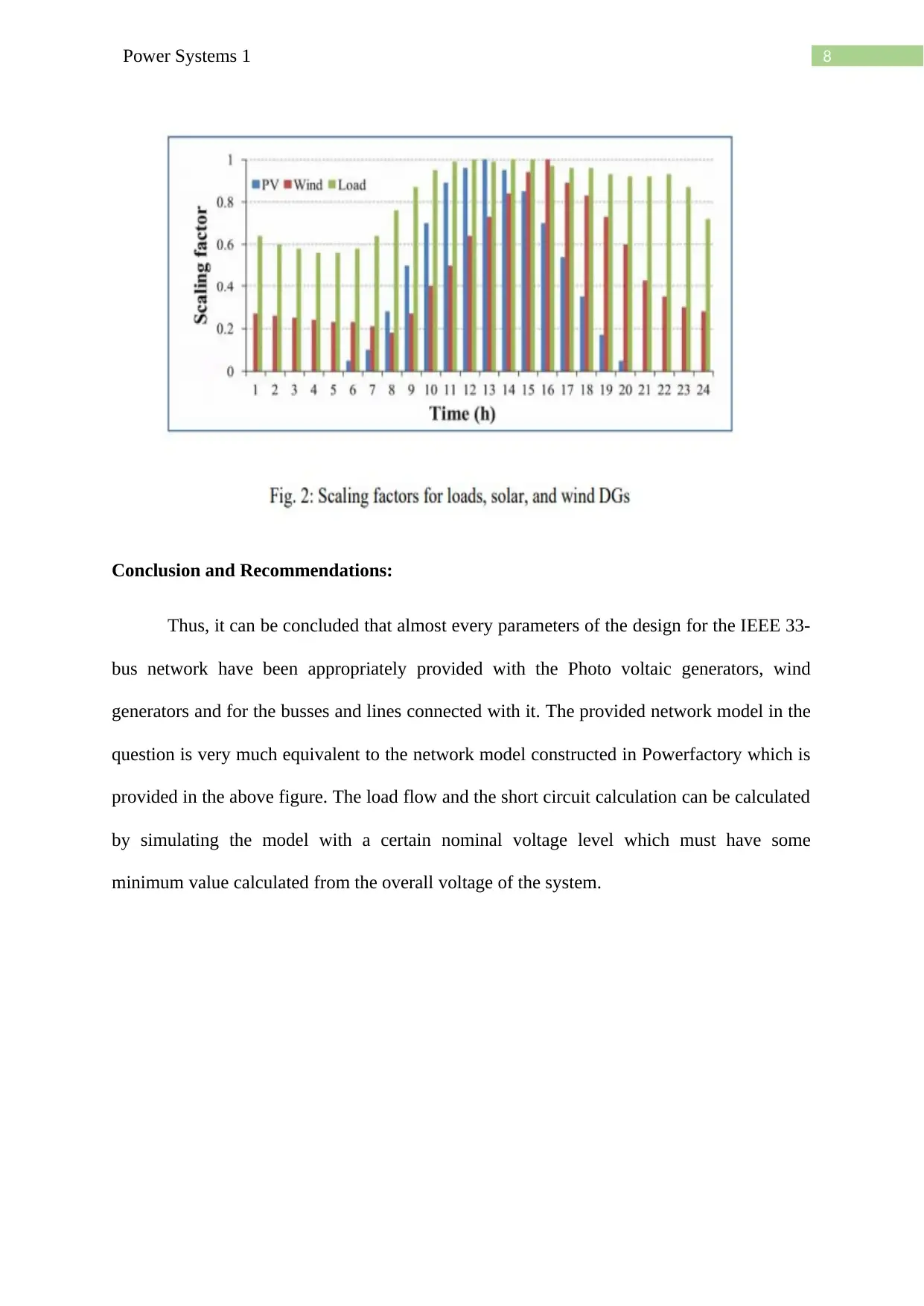
8Power Systems 1
Conclusion and Recommendations:
Thus, it can be concluded that almost every parameters of the design for the IEEE 33-
bus network have been appropriately provided with the Photo voltaic generators, wind
generators and for the busses and lines connected with it. The provided network model in the
question is very much equivalent to the network model constructed in Powerfactory which is
provided in the above figure. The load flow and the short circuit calculation can be calculated
by simulating the model with a certain nominal voltage level which must have some
minimum value calculated from the overall voltage of the system.
Conclusion and Recommendations:
Thus, it can be concluded that almost every parameters of the design for the IEEE 33-
bus network have been appropriately provided with the Photo voltaic generators, wind
generators and for the busses and lines connected with it. The provided network model in the
question is very much equivalent to the network model constructed in Powerfactory which is
provided in the above figure. The load flow and the short circuit calculation can be calculated
by simulating the model with a certain nominal voltage level which must have some
minimum value calculated from the overall voltage of the system.
⊘ This is a preview!⊘
Do you want full access?
Subscribe today to unlock all pages.

Trusted by 1+ million students worldwide
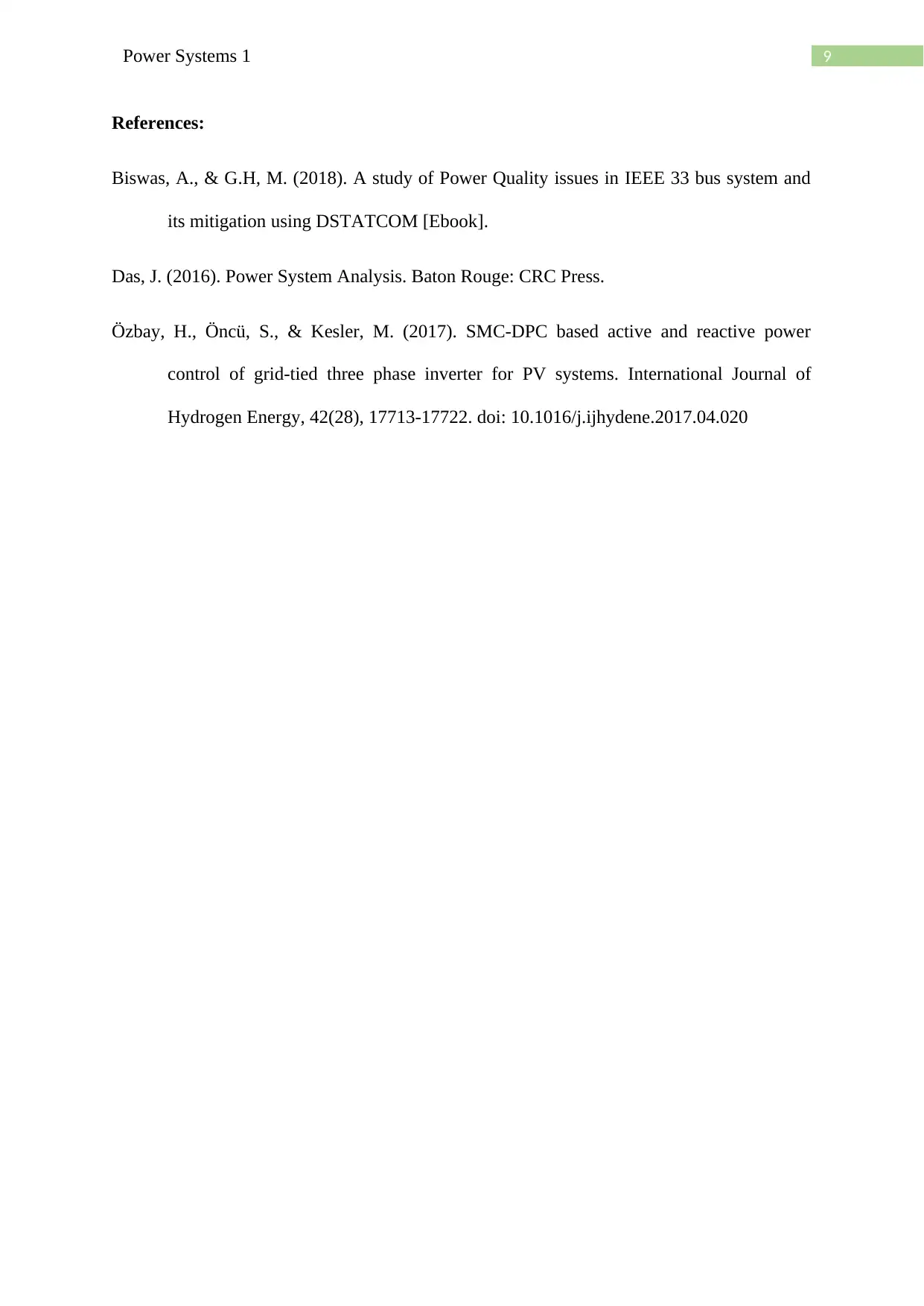
9Power Systems 1
References:
Biswas, A., & G.H, M. (2018). A study of Power Quality issues in IEEE 33 bus system and
its mitigation using DSTATCOM [Ebook].
Das, J. (2016). Power System Analysis. Baton Rouge: CRC Press.
Özbay, H., Öncü, S., & Kesler, M. (2017). SMC-DPC based active and reactive power
control of grid-tied three phase inverter for PV systems. International Journal of
Hydrogen Energy, 42(28), 17713-17722. doi: 10.1016/j.ijhydene.2017.04.020
References:
Biswas, A., & G.H, M. (2018). A study of Power Quality issues in IEEE 33 bus system and
its mitigation using DSTATCOM [Ebook].
Das, J. (2016). Power System Analysis. Baton Rouge: CRC Press.
Özbay, H., Öncü, S., & Kesler, M. (2017). SMC-DPC based active and reactive power
control of grid-tied three phase inverter for PV systems. International Journal of
Hydrogen Energy, 42(28), 17713-17722. doi: 10.1016/j.ijhydene.2017.04.020
1 out of 10
Related Documents
Your All-in-One AI-Powered Toolkit for Academic Success.
+13062052269
info@desklib.com
Available 24*7 on WhatsApp / Email
![[object Object]](/_next/static/media/star-bottom.7253800d.svg)
Unlock your academic potential
© 2024 | Zucol Services PVT LTD | All rights reserved.





